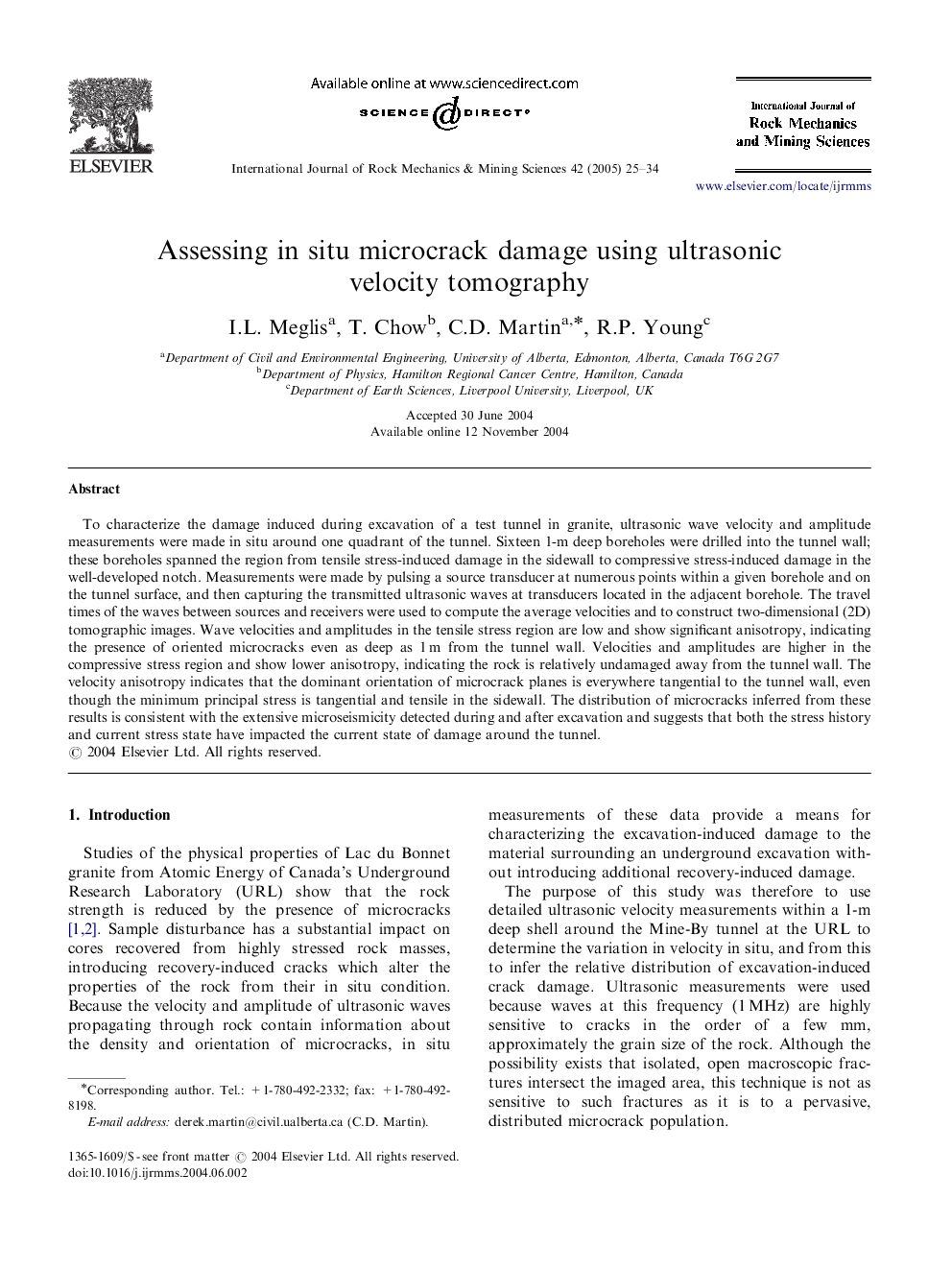| Article ID | Journal | Published Year | Pages | File Type |
|---|---|---|---|---|
| 9716511 | International Journal of Rock Mechanics and Mining Sciences | 2005 | 10 Pages |
Abstract
To characterize the damage induced during excavation of a test tunnel in granite, ultrasonic wave velocity and amplitude measurements were made in situ around one quadrant of the tunnel. Sixteen 1-m deep boreholes were drilled into the tunnel wall; these boreholes spanned the region from tensile stress-induced damage in the sidewall to compressive stress-induced damage in the well-developed notch. Measurements were made by pulsing a source transducer at numerous points within a given borehole and on the tunnel surface, and then capturing the transmitted ultrasonic waves at transducers located in the adjacent borehole. The travel times of the waves between sources and receivers were used to compute the average velocities and to construct two-dimensional (2D) tomographic images. Wave velocities and amplitudes in the tensile stress region are low and show significant anisotropy, indicating the presence of oriented microcracks even as deep as 1Â m from the tunnel wall. Velocities and amplitudes are higher in the compressive stress region and show lower anisotropy, indicating the rock is relatively undamaged away from the tunnel wall. The velocity anisotropy indicates that the dominant orientation of microcrack planes is everywhere tangential to the tunnel wall, even though the minimum principal stress is tangential and tensile in the sidewall. The distribution of microcracks inferred from these results is consistent with the extensive microseismicity detected during and after excavation and suggests that both the stress history and current stress state have impacted the current state of damage around the tunnel.
Related Topics
Physical Sciences and Engineering
Earth and Planetary Sciences
Geotechnical Engineering and Engineering Geology
Authors
I.L. Meglis, T. Chow, C.D. Martin, R.P. Young,
